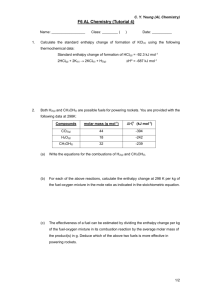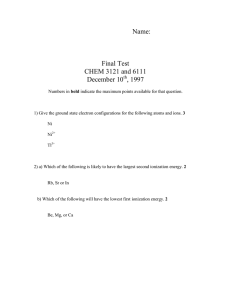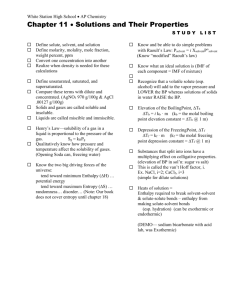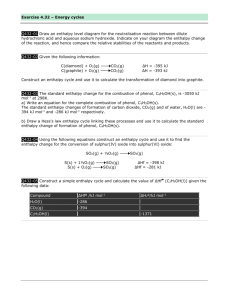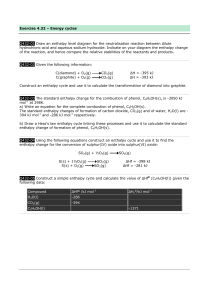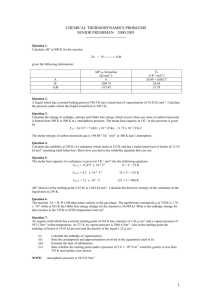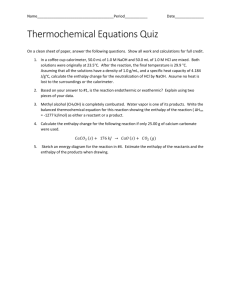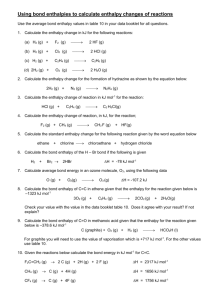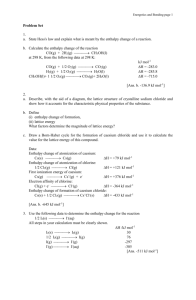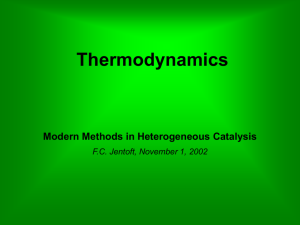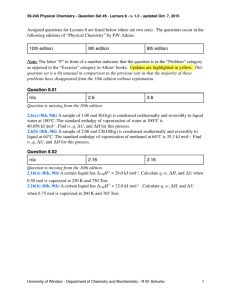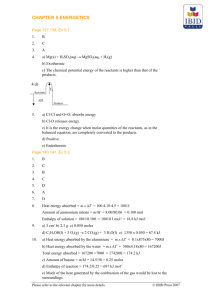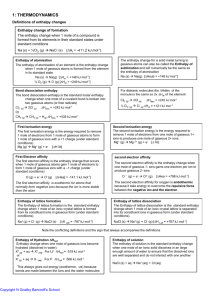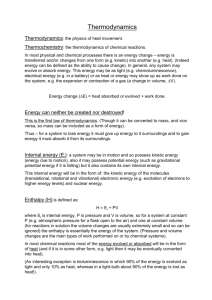Class work exercise on “Energetics”
advertisement
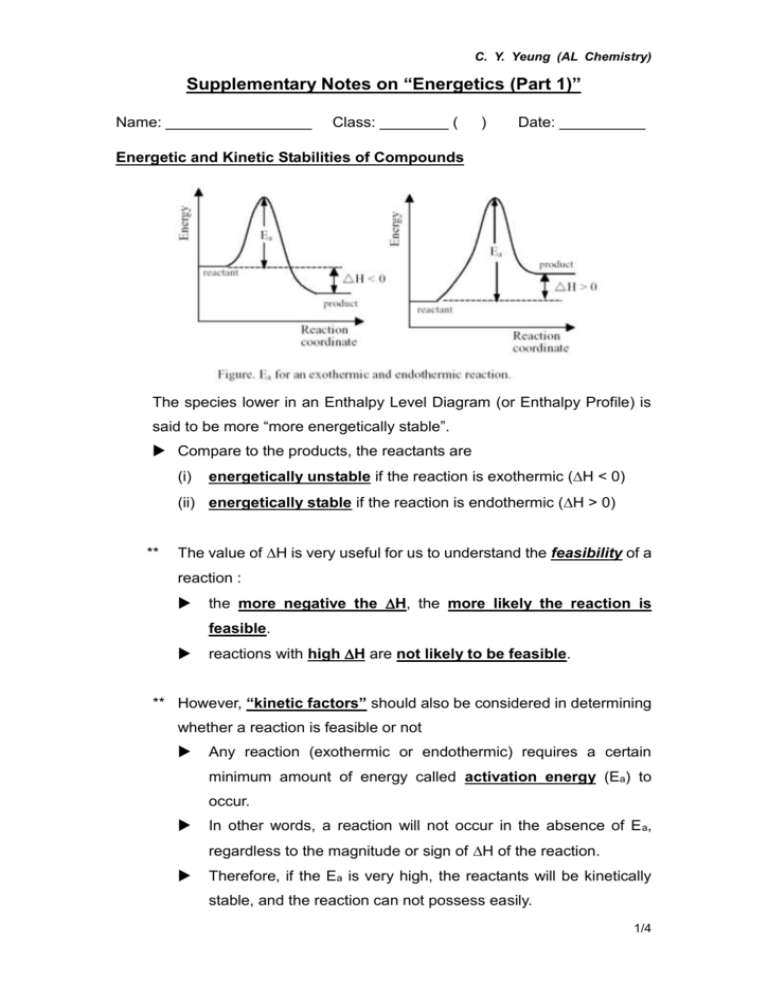
C. Y. Yeung (AL Chemistry) Supplementary Notes on “Energetics (Part 1)” Name: _________________ Class: ________ ( ) Date: __________ Energetic and Kinetic Stabilities of Compounds The species lower in an Enthalpy Level Diagram (or Enthalpy Profile) is said to be more “more energetically stable”. Compare to the products, the reactants are (i) energetically unstable if the reaction is exothermic (H < 0) (ii) energetically stable if the reaction is endothermic (H > 0) ** The value of H is very useful for us to understand the feasibility of a reaction : the more negative the H, the more likely the reaction is feasible. reactions with high H are not likely to be feasible. ** However, “kinetic factors” should also be considered in determining whether a reaction is feasible or not Any reaction (exothermic or endothermic) requires a certain minimum amount of energy called activation energy (Ea) to occur. In other words, a reaction will not occur in the absence of E a, regardless to the magnitude or sign of H of the reaction. Therefore, if the Ea is very high, the reactants will be kinetically stable, and the reaction can not possess easily. 1/4 C. Y. Yeung (AL Chemistry) Class work exercises 1. 0.20 mole of an anhydrous acid is added to water to make a 250cm 3 standard solution. The temperature rises by 12.5 0C. What is the enthalpy change for the dissolution process? [Assume the density and the specific heat capacity of the solution are 1.00g cm-3 and 4200 J kg-1 K-1 respectively. Heat loss is negligible.] 2. Consider the following reaction: Zn(s) + Cu2+(aq) Zn2+(aq) + Cu(s) H = -216.7 kJ mol-1 (a) Draw the enthalpy level diagram for the above reaction. (b) Which species are more energetically unstable? Why? (c) Are the species in (b) kinetically stable? Why? 3. Given that H of the following reaction is -114.6kJ mol-1 : Ca(OH)2 (aq) + 2HCl (aq) CaCl2 (aq) + 2H2O (l) Calculate the standard enthalpy change of neutralization of calcium hydroxide and hydrochloric acid. 2/4 C. Y. Yeung (AL Chemistry) 4. Consider the following reaction: H2(g) + 1 O2(g) H2O (l) 2 H = -285.9 kJ mol-1 What is the amount of heat released when (a) 1 mole of H2(g) is burned in 10 moles of O2(g) to give H2O (l) ? (b) 1 mole of H2(g) is burned in 1 mole of O2(g) to give H2O (l) ? 5. If the standard enthalpy change for the following reaction is -890 kJ mol-1 CH4 (g) + 2O2 (g) CO2 (g) + 2H2O (l) Predict whether the H for the reaction CH4 (g) + 2O2 (g) CO2 (g) + 2H2O (g) will be more exothermic or less exothermic than -890 kJ mol-1. Explain your answer with an enthalpy level diagram. 3/4 C. Y. Yeung (AL Chemistry) 6. Predict and explain whether the enthalpy change of neutralization for the reaction: 1 1 1 Ba(OH)2(aq) + H2SO4(aq) BaSO4(s) + H2O(l) 2 2 2 will be more exothermic than -57.3 kJ mol-1. [Assume that both Ba(OH)2 and H2SO4 are completely ionized in water.] 7. 0.40dm3 of a 0.2M weak acid (HA) is added to 0.10dm 3 1.0M NaOH in an expanded polystyrene cup at 298K. The temperature increases by 1.20 0C. (a) What assumptions are made for the calculation of the enthalpy change of neutralization? (b) Calculate the enthalpy change of neutralization. (c) Suggest ONE improvement on this experiment. (d) The enthalpy change of neutralization between hydrochloric acid and sodium hydroxide solution is -57.3 kJ mol-1. Comment on the difference between this value and the calculated value in (b). [Specific heat capacity of water = 4.18 J g-1 K-1] 4/4
